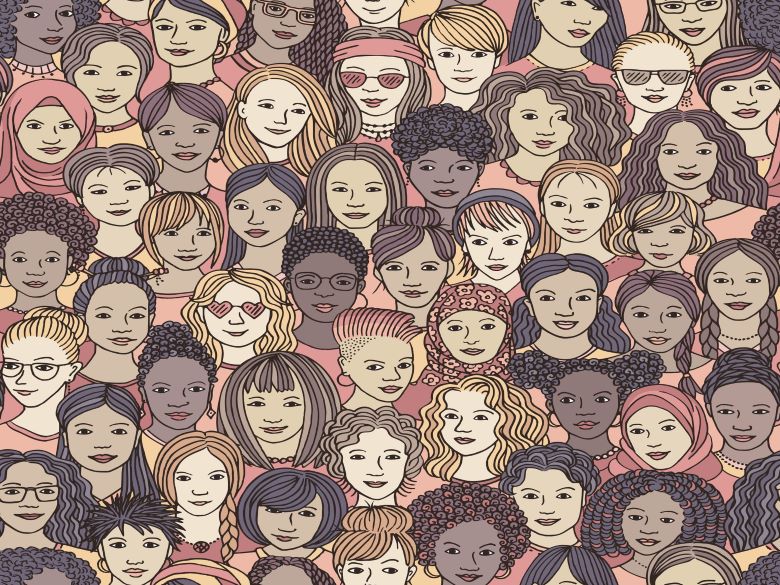5 health barriers working women face—and how to break them
How are you observing International Women’s Day this year? Helping to rid the workplace of unfair health obstacles would be a fine place to start.

Enshrined in the Constitution just over 100 years ago, women’s right to vote shattered barriers for future generations. The power of choice, however, still eludes women trying to stay well while working.
Shouldering remote work duties while being caregivers, surrogate teachers, and household managers, women in today’s workplace balance a mountain of stress. Health-related gender biases are so common, they have shockingly become accepted customs.
The pandemic has exacerbated this crisis. As NBC News recently reported: “More than 2.3 million women have left the workforce since February 2020, bringing their labor participation rate to levels not seen since 1988,” adding that, “Not only is there generally an inequity in gender roles at home, with women still holding the lion’s share of family caregiving, but women tend to make less than men.”
As we observe International Women’s Day on March 8, business leaders should reconsider how they can do their part to remedy the wellness crisis for working women. As a start, communicators can point out where gender assumptions threaten the health, safety and sense of belonging for employees.
The gender gauntlet
Single or partnered? Mother or childfree? Age 40 or older? Younger? Racial identity? Gender expression?
Welcome to women’s daily dash through the gender gauntlet.
Throughout their careers, women confront overlapping dimensions of bias or “intersectionality,” a term first specified by legal and civil rights scholar Kimberlé Crenshaw. Although experiences of unfair treatment are very personal, the marginalization of working women as a group persists because it is embedded in business culture.
Gender bias in the workplace is often hidden or dismissed as harmless fun. Over time, distorted judgments are stockpiled, and then weaponized by managers whose policies undermine the careers of women.
Risk to careers and health
Systemic inequalities not only thwart career advancement, they also harm women’s health. This keeps a woman’s place in business in a perpetual state of instability.
Vigilant communicators can help organizations close gaps for women in five health categories, set forth in 1948 by the World Health Organization: Physical, Intellectual, Spiritual, Emotional and Social.
1. Physical health
For older women, maternal health is turning into a test, not only of their physical readiness to work, but also for retaining their roles as authority figures.
Birth rates have held steady or risen for women aged 35 and older from 2018 to 2019, while numbers have fallen for women aged 15 to 34, according to the CDC’s May 2020 findings.
After reaching the management phase of their careers, female employees find they lack the resources needed during pregnancy and after giving birth. Without options such as paid family leave, remote work, flexible hours or support for pumping breast milk at work, many new mothers who are decision-makers end up leaving their jobs.
2. Intellectual health
Creative problem-solving is not only a business exercise, it is also a function of staying healthy.
Innovative thinking by women, however, is rarely rewarded. Female founders of startups received a meager 2.8% of available capital invested in 2019, according to Pitchbook.
Working women still face unfair stereotypes when introducing their logic. When they challenge a point, they are labeled as “difficult.” Their judgment is questioned or characterized as women’s intuition.
3. Spiritual health
Female employees who strive for a higher purpose at work seek ways to unite or encourage their colleagues.
Managers view activities like planning company parties or serving on diversity and inclusion committees to be culturally enriching. However, such roles are not valued enough to garner extra compensation or promotions, explained economics professors Linda Babcock, Maria P. Recalde, and Lisa Vesterlund.
Considered “office housework,” executives view women’s nurturing relationships as mere scaffolding for outcomes lauded as heroic, such as generating revenue and reducing costs.
“These differences do not appear to result from gender differences in preferences, but rather from a shared understanding that women will volunteer more than men…managers could consider rotating assignments across employees,” wrote Babcock, Recalde, and Vesterlund in Harvard Business Review.
4. Emotional health
As their parents and loved ones age at home, women who are family members or friends provide unpaid care. The sacrifice affects their well-being and wallets.
Devoting about three hours a day to eldercare, often while holding down outside jobs, women feel burnt out from lack of sleep, self-doubt and financial worries. In addition, the uncompensated work of female caregivers racks up $324,000 in lost primary wages and Social Security benefits, as well as $7,000 in personal expenses, says AARP.
By providing access to wellness resources, employee affinity groups, and flexible work schedules, employers can support working women who voluntarily care for America’s aging population.
5. Social health
During this time of social distancing, video calls function as an important lifeline for women.
There may be female employees who habitually turn down invitations to video meetings. They may have agitated domestic partners who frequently interrupt them onscreen. Do not dismiss these as evidence of a woman’s poor work habits or lack of professionalism.
In April 2020, the United Nations Population Fund laid out troubling projections: “For every 3 months the lockdown continues, an additional 15 million additional cases of gender-based violence are expected.” UN Women provided guidance on keeping women safe while working remotely in its Women’s Empowerment Principles.
Staying fit and free from disease is how most people pursue a healthy lifestyle. For too many women, staying safe and well can shut doors to reaching their full potential at work.
Communicators, work with your employers now to ensure that women will not have to wait 100 more years to break another barrier.
Mary C. Buhay is founder and CEO of Buhay Advisors. You can follow her on LinkedIn and Twitter.







Excellent if alarming points!
I have only one caveat, and it’s about the illustration, not the article. I see the illustration has racial/ethnic diversity. What kind of diversity does it NOT have? Take a look at the third item right under “The gender gauntlet.”
Barbara, Thank you for reading the article! You make an important point. Whether in media imagery or in the workplace, seeing a diverse representation of women – including those ages 40+ – among the faces around us is the first step in removing barriers. The richness of women’s lived experiences must be acknowledged and celebrated.